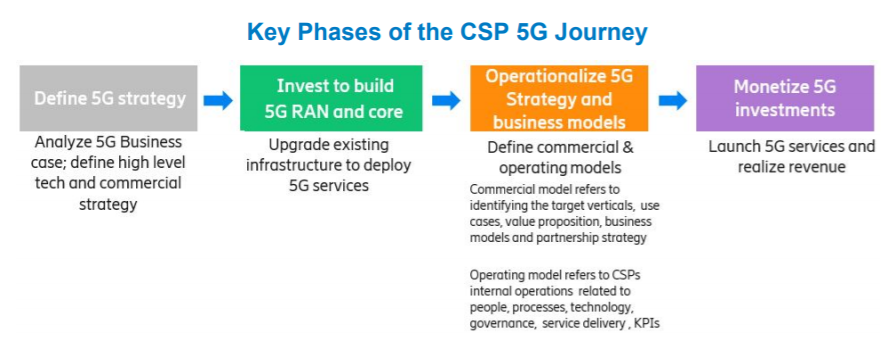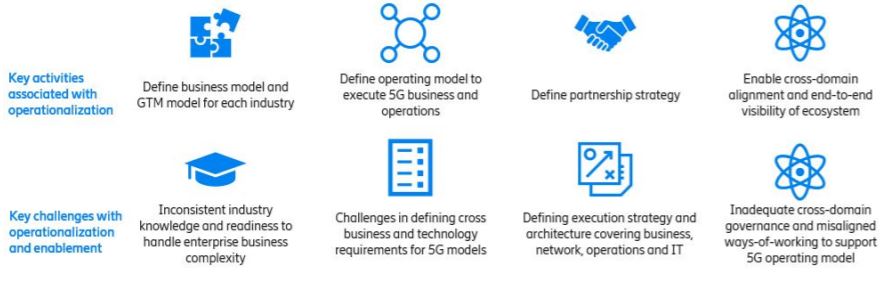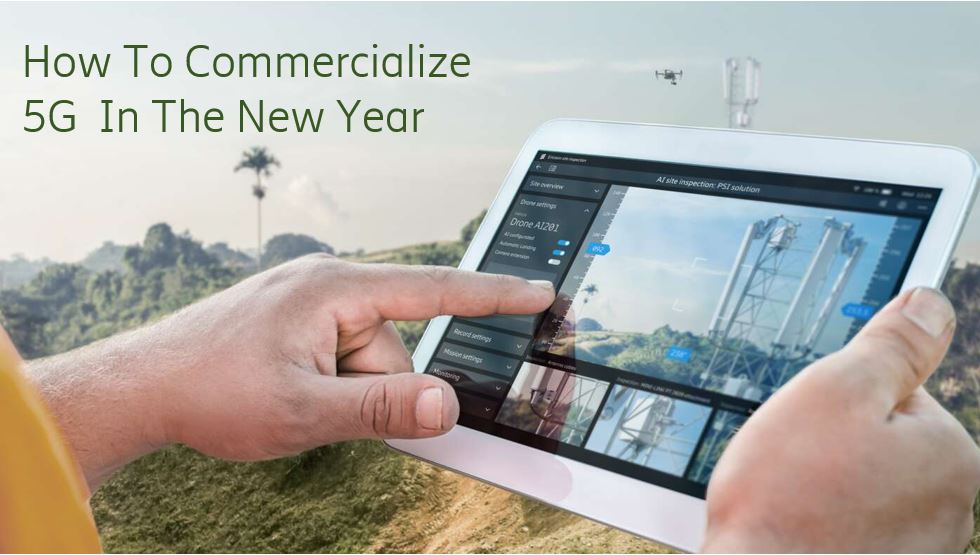- Craig
- Bussiness
CSPs strive to monetize and reap the benefit of 5G investments
It is critical that CSPs effectively operationalize 5G strategy and business models to unleash the full revenue potential in consumer and enterprise segments.
January 2021: Major Communications Service Providers (CSPs) in North America who embarked upon the 5G journey in 2018 have come a long way in 2 years’ time. The USA and Canada combined have 7 commercial deployments as of September 2020 serving 6 million 5G subscribers, and the industry estimates capital spend worth $300 Billion USD from 2019 to 2025 to fully deploy 5G. CSPs have already made significant investments in upgrading their RAN and Core infrastructures to launch 5G services and will continue to invest in coming years as they expand coverage. But the key question–how to monetize the investments–remains unanswered!

Operationalizing 5G strategy has two critical components– (a)defining the commercial model for each 5G offering (b) defining an organization-wide operating model that enables multiple commercial models. A close synergy between commercial models and the operating model is imperative to successfully monetize 5G Investment.
It is critical that CSPs effectively operationalize 5G strategy and business models to unleash the full revenue potential in consumer and enterprise segments.
Challenges in activities associated with operationalizing 5G strategy
Operationalizing 5G strategy involves multiple activities and also has several challenges. Most likely, there are further underlying enablement issues which are directly or indirectly related to operationalization challenges. The enablement issues are gaps in required resources (e.g. processes, competencies, tools, etc.) to resolve the operationalization challenges.

Complexity increases as CSPs explore new verticals and applications
For example, if a CSP wants to sell Private Networks to an electric utility, it could consider a network builder model targeting a specific utility type and a network as-a service model for other utility types. Next, it would define the value proposition, use cases, industry partners, pricing model, and promotion strategy for each business model. As the number of target customer types increases, so does the complexity.
- The analysis gets more complex when the exercise is done for multiple industries and considers the impact of synergies and interdependencies among verticals on internal operations like OSS/BSS systems and functional processes
- Complexities further increase when this entire exercise is repeated for multiple products like network slicing, edge compute, etc.
Finally, the complexity will only increase as 5G matures, we find new applications and move into new industries. Additional factors like a changing competitive environment in a market and an evolving ecosystem are unavoidable realities. The impact of all this complexity on the organization’s internal operations including processes, people, and technologies can only be imagined!
inCode’s framework mitigates CSPs challenges
inCode and Ericsson have experience in consulting with CSPs to streamline internal operations. Read more about our findings on operators’ challenges from multiple consulting engagements around the globe in the whitepaper.
Whitepaper on CSP's 5G challenges
Send download link to:
inCode and Ericsson have designed a project methodology and framework that will guide operators in operationalizing 5G Strategy
The Project Methodology is a step by step approach to design a blueprint which will resolve operationalization challenges. It has four sequential phases which begins with analyzing the CSP’s current operational health and ends with defining a roadmap to reach the desired end-state. Each phase has three workstreams to ensure that CSP’s operations are aligned with overall 5G
business strategy, network strategy, and creates synergies within the overall operations function. This methodology is supported by a framework that provides a structured approach to visualize, define, and validate CSP’s specific 5G operationalization needs. It also serves as a tool to help analyze the holistic and cross-functional impact of 5G business models on internal operations. inCode’s library of assets and tools can be used to expedite project delivery.
For questions or assistance please e-mail info@incodeconsulting.com

